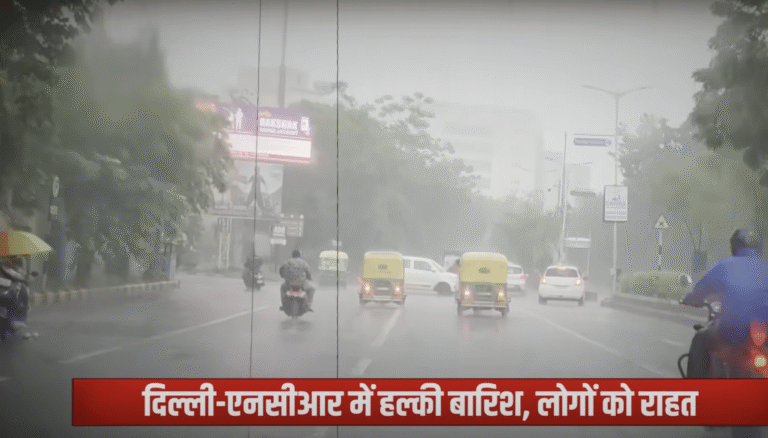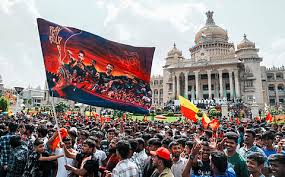🚄 New Vande Bharat Express to Connect Vaishno Devi and Jammu & Kashmir Over 276 KM


Date: June 8, 2025
Location: Jammu & Kashmir
Indian Railways Greenlights Strategic Northern Corridor
In a major infrastructure development initiative, the Indian Railways has announced a new Vande Bharat Express train route that will connect Vaishno Devi (Katra) to regions deeper in Jammu & Kashmir. The proposed project will span 276 kilometers and aims to provide high-speed, comfortable, and modern travel options for both pilgrims and tourists visiting the Himalayan region.
Boosting Tourism and Economic Development
This Vande Bharat Express corridor is not just a transportation project but a strategic step towards unlocking the tourism potential of J&K. With millions of devotees visiting the Mata Vaishno Devi shrine every year, this train will significantly reduce travel time and enhance accessibility to key religious and tourist destinations in northern India.
Modern Engineering and Safety Features
The new 276 km route will feature advanced tunneling, elevated bridges, and cutting-edge rail infrastructure, capable of supporting speeds of up to 180 km/h. It will be equipped with state-of-the-art Train Collision Avoidance System (TCAS), bio-vacuum toilets, and WiFi-enabled coaches. The route will also prioritize green technologies and minimal environmental disruption through tunnel-based design.
Route Overview and Stops
- Starting Point: Katra (Vaishno Devi)
- Udhampur
- Srinagar (proposed)
- Anantnag (proposed)
- Terminus: Baramulla (tentative)
The full route alignment is under final survey and consultation with local stakeholders and the Ministry of Home Affairs.
Strategic Significance
This rail corridor is also expected to have a strategic and security angle, improving connectivity in one of the most sensitive regions of the country. Officials from the Ministry of Railways and the Border Roads Organization are working jointly to ensure that both civilian and strategic needs are fulfilled.
Expected Timeline
The survey and planning work is expected to be completed by December 2025, while the project construction could begin in early 2026. The estimated time to completion is 3–4 years, with the train expected to be operational by 2030.
“This new Vande Bharat Express will bring Jammu & Kashmir closer to the rest of India — both culturally and economically.”
— Ashwini Vaishnaw, Railway Minister
Public Reactions
The announcement has sparked excitement across social media and the tourism sector. Travel agencies and religious tour organizers are already anticipating a major boost in demand once the line becomes operational.
Conclusion
The Vande Bharat Express from Vaishno Devi to Jammu & Kashmir is a milestone project symbolizing India’s commitment to nation-building, regional integration, and modern infrastructure. With high-tech railways entering the valleys of Kashmir, the dream of a more connected India takes a solid leap forward.
🚧 Key Infrastructure: Bridges, Tunnels & Engineering Marvels
The Vande Bharat Express project from Vaishno Devi (Katra) to various regions in Jammu & Kashmir is not only a transportation boost but also a technological marvel. The 276-km stretch is expected to feature a series of engineering masterpieces, including some of the highest rail bridges and longest railway tunnels in India.
1. Chenab Rail Bridge Extension
A vital part of the route will integrate with the Chenab Rail Bridge, which is already the world’s highest railway arch bridge. Located near Reasi, this iconic bridge spans the Chenab River at a height of 359 meters. The upcoming Vande Bharat alignment will extend infrastructure from this bridge, ensuring high-speed rail compatibility.
- Bridge Length: 1,315 meters
- Material: Steel and concrete composite arch design
- Wind Resistance: Up to 260 km/h
2. Anji Khad Bridge
Another spectacular structure being developed is the Anji Khad Bridge, India’s first cable-stayed railway bridge. This bridge will serve as a key link in the new route and is designed to withstand seismic activity and strong wind zones.
- Height: 331 meters above river bed
- Main Span: 290 meters
- Type: Single-pylon cable-stayed bridge
3. Himalayan Railway Tunnels
To minimize ecological disturbance and maintain gradient safety, Indian Railways has opted for a tunnel-dominant route. More than 60% of the 276 km stretch will pass through mountain tunnels, some of which will rival the Konkan and Pir Panjal tunnels in length and complexity.
- Estimated Tunnels: 20+
- Longest Tunnel (Proposed): 12.5 km between Katra and Qazigund
- Tunneling Technology: NATM (New Austrian Tunneling Method)
4. Earthquake-Resistant Design
Given the region’s seismic sensitivity, all major structures including bridges and tunnels are being designed with Zone-V earthquake resistance standards. Shock absorbers, flexible expansion joints, and deep foundation techniques are being incorporated.
5. Snow and Avalanche Protection
The train route will pass through snow-prone areas. To ensure uninterrupted operation during winter months, Indian Railways plans to implement:
- Snow galleries over rail tracks
- Automatic de-icing systems
- Avalanche sensors and warning systems
6. Electrification & Signaling
The entire 276 km stretch will be fully electrified using 25 kV AC overhead lines. A dedicated signaling system using ETCS Level 2 will allow real-time train monitoring and semi-autonomous operation for enhanced safety and efficiency.
Conclusion
This ambitious infrastructure, combining world-class bridges, smart tunnels, and future-ready systems, makes the Vaishno Devi to J&K Vande Bharat Express project one of the most advanced railway projects ever undertaken in India. It stands as a shining example of India’s ability to innovate in challenging terrains and extreme weather conditions.













